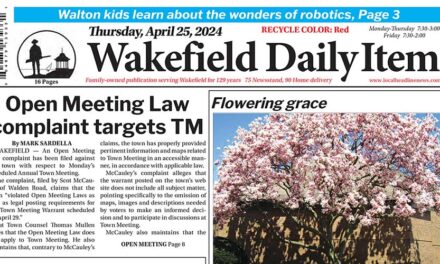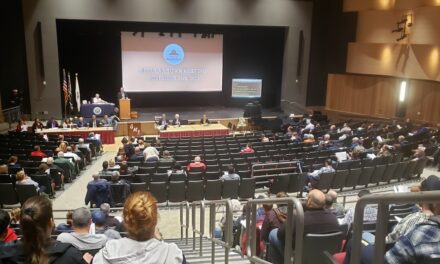Published in the January 19, 2017 edition.
By MARK SARDELLA
With the various measures they pass on the federal and state level, lawmakers come up with some interesting concepts. They even think they can control the weather by passing climate regulations. (I wonder what the Supremacy Clause under Article VI of the Constitution says about the doctrine of preemption when it comes to the Laws of Nature vs. the Laws of Man.)
But not content with their dominion over three dimensions, some of our solons on Beacon Hill now want to extend their control over the fourth dimension — that of Time. (Rod Serling could not be reached for comment.)
You may have heard last week that the Massachusetts Senate has convened an 11-member special commission to study whether Massachusetts should go to daylight saving time year-round.
Legislative efforts to control the clocks are nothing new, of course. Various ways of adjusting the clocks to the seasons have been around since the Roman Empire. In the United States, daylight saving time was first introduced during World War I and repealed a few years later. In 1942, President Franklin D. Roosevelt put the entire country on a form of daylight saving time called “War Time.” After the war, we returned to “Peace Time.”
From 1945 to 1966, there was no uniform application of daylight saving time, with some states and regions observing it and some not. As you might imagine, this caused widespread confusion with transportation schedules and yoga classes. So the Uniform Time Act of 1966 was established by Congress. It stated that daylight saving time would begin on the last Sunday of April and end on the last Sunday of October. However, states still had the ability to be exempt from DST by passing a state ordinance.
About 10 years ago, daylight saving time was extended about a month, and today it starts on the second Sunday in March and ends on the first Sunday in November.
I’m a big fan of daylight saving time but the latest legislative effort to control every clock in Massachusetts year-round goes too far. In the summer, when it’s warm and you can do things outside after work, I like having it light out until almost 9 p.m. But other than skiers, who cares if the sun sets at 4 p.m. when the temperature is 20 degrees and there’s a foot and a half of snow on the ground?
As much as I like daylight saving time, I still want to return to standard time in the fall. On Jan. 1, the sun rises around here at 7:15 a.m. On a grey, cloudy day (and we have a few of those during New England winters) it doesn’t seem like daylight until 7:30. If we went to year-round daylight saving time, the sun would rise at 8:15 on January 1, with full daylight around 8:30 a.m.
That means you’d be sending your kids off to school in the middle of the night.
Then again, maybe not.
If the latest fad in education takes hold (and it looks like it will) school start times may be pushed significantly later for all students. You see, scientists say the kids need their beauty sleep and forcing them to rise with the chickens is having a negative effect on the academic performance and emotional well-being.
According to the National Sleep Foundation, “later sleep and wake patterns among adolescents are biologically determined; the natural tendency for teenagers is to stay up late at night and wake up later in the morning.”
I made the very same scientific discovery while I was a student at Wakefield High School last century. I tried to explain my conclusions to my mother, but after about the fourth or fifth time that she yelled for me to get up for school she was in no mood to hear my theories on adolescent sleep deprivation. As a minor, I was forced to adjust to the world.
But things are different today, and the world must adjust to teenage biology. (Can I get reparations for all the sleep I was deprived of in my youth?)
The experts say that between homework, sports, other extracurricular activities and jobs, high school students aren’t getting the nightly 8 1/2 to 9 1/2 hours of sleep that adolescents need.
So the burning question in educational circles is: Where will students find the time to sleep? The answer should be obvious: the same place they always have — in the classroom.
Another concern is that if Massachusetts decides to unilaterally go to year-round daylight saving time and no other states in the Eastern Time Zone follow suit, it would lead to massive confusion. We could have next door neighbors along the Massachusetts-New Hampshire border in different time zones.
But hey, maybe that’s not such a big deal. Time is a human construct, right? Or at least its measurement is. Maybe Wakefield could have its own time zone. Come to think of it, we could all have our own individual time zones, because who are we to dictate to another human being what time it is on their internal clock?
If your boss says you’re late, tell him that your internal clock is on Central Standard Time and you’re early. If he fires you, remind him that it’s 2017, not 1950, and that time is an evolving paradigm. Then sue him for violating your temporal rights.
Whatever time zone you identify with, it’s time to spring forward and tell our representatives to back off and keep their hands off our timepieces.




